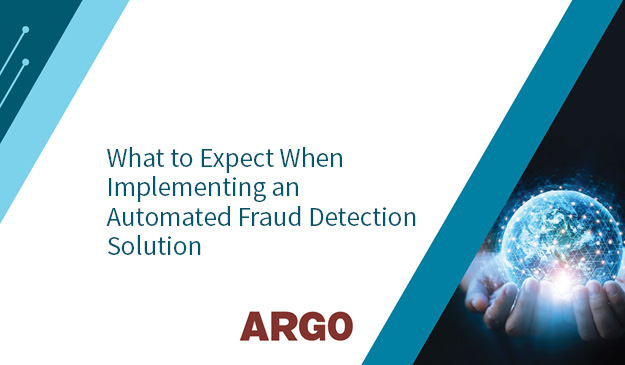With the increased risk of fraud occurrences in FIs, many banks and credit unions are turning to automated fraud detection solutions to help remedy the issue. Organizations should look for solution providers that offer an implementation model that is optimized to maximize deployment efficiency (resource, cost, and time-to-market considerations). The model should consist of structured processes, milestones, accountability, schedules, and activities supported by an execution framework, including inputs, outcomes, and KPIs. A structured model keeps the project on track and maintains forward progress.
Implementation stages to look for include:
- Discovery and data gathering
- Installation and integration
- Validation
- Training and UAT (user acceptance testing)
- Go-live
- Ongoing operations and optimization
The ARGO Fraud solution, OASIS™ (Optimized Assessment of Suspicious Items), provides cross-channel, multi-fund analytics and adjudication workflow to detect fraudulent transactions and suspicious items. ARGO works with FIs to implement solutions in stages, including discovery, installation/integration, validation, training, go-live, and ongoing operations. Together, they outline all activities, tools, and documentation used to support points of knowledge transfer and the resources required for the implementation activities. A great deal of experience and expertise contributed to honing this implementation model. While each implementation is unique in size, scope, specific requirements, and more, this model helps guide the process to an on-time, on-budget conclusion.
For more information, download the “OASIS Implementation and Services” interview with David Engebos, President and COO of ARGO.





